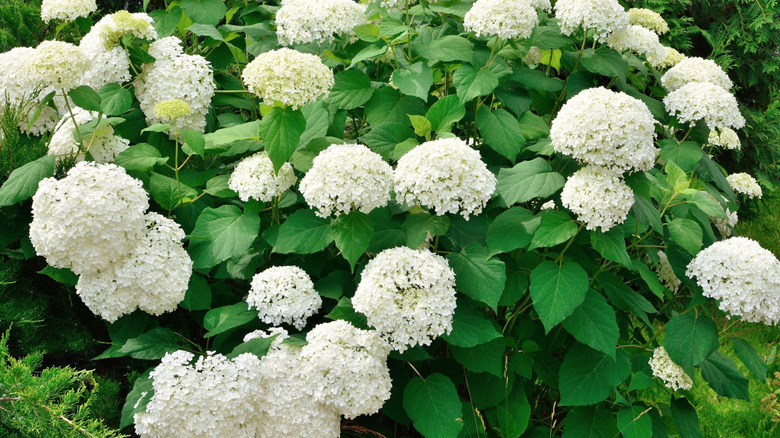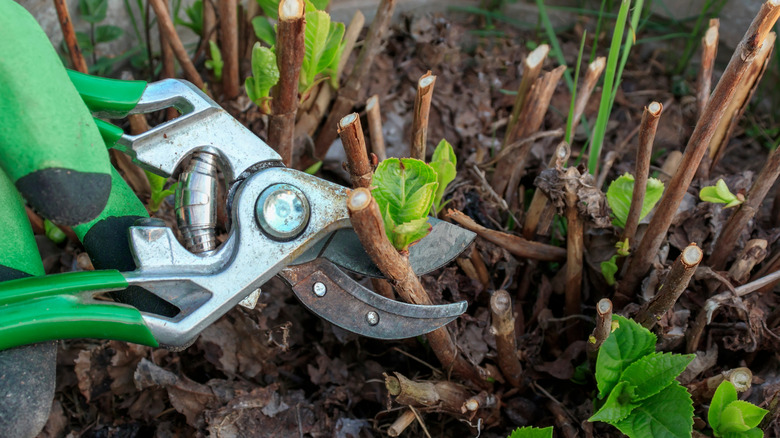The Best Way To Prune Annabelle Hydrangeas For Gorgeous Garden Flowers
If you've owned a hydrangea for several years, you likely know that pruning isn't absolutely necessary. Even if the shrub is a bit scraggly and misshapen, it will still survive and produce flowers. However, for the hydrangea to reach its full potential, regular pruning is highly recommended. This form of maintenance gives the shrub an appealing shape, encourages new growth, and ensures that the plant is the right size for its spot in the garden.
But don't jump into action just yet. Not all hydrangeas require the same type and timing for pruning. There are different varieties of hydrangea and knowing what's in your garden will determine when and how much you'll need to prune. For example, Hydrangea macrophylla, or bigleaf hydrangeas (the most common variety found in nurseries), bloom on old growth and should be pruned in the summer after they've bloomed.
Hydrangea arborescens 'Annabelle,' however, is a type of smooth hydrangea — a variety that produces sizable clusters of white flowers. The flowers of Annabelle hydrangeas, which peak between June and September, grow on the current season's new branches, unlike the bigleaf varieties. To encourage robust growth and gorgeous flowers, give the Annabelle hydrangeas a hard pruning in late winter or early spring once the plant has been established (usually after a season or two).
How pruning benefits the Annabelle hydrangea
Pruning during the wrong time of year won't kill the plant, but it can impact its flower production. And don't be shy — cutting them down to the ground will produce large flowers and strong stems. If you prefer smaller flowers, you can cut the stems down to 1 to 2 feet instead. If you're pruning the cane where buds are present, make a cut at a 45-degree angle, with the higher end of the cut slightly above the bud.
As we mentioned earlier, pruning a hydrangea isn't essential, but it's highly beneficial. For the Annabelle, the drastic removal of canes encourages the plant's new growth to mature before winter arrives and survive cold temperatures. This is why the timing of the pruning is crucial.
In addition to the hard pruning and these crucial steps if you want to see your hydrangea thrive in spring, regular maintenance will boost the beauty of your hydrangea. The removal of dead canes and deadheading can be done anytime of year. Look for old branches that are dark and crisp that can be trimmed down to the base of the plant. They typically no longer have any buds or leaves. These will snap quite easily and will be dry throughout, versus a healthy cane that will still be green inside. When deadheading, trim the dried flowers down to the next bud or healthy leaf. Once you're done, be sure to sterilize your pruning shears to ensure that the tools are clean for their next use.

